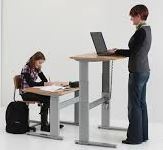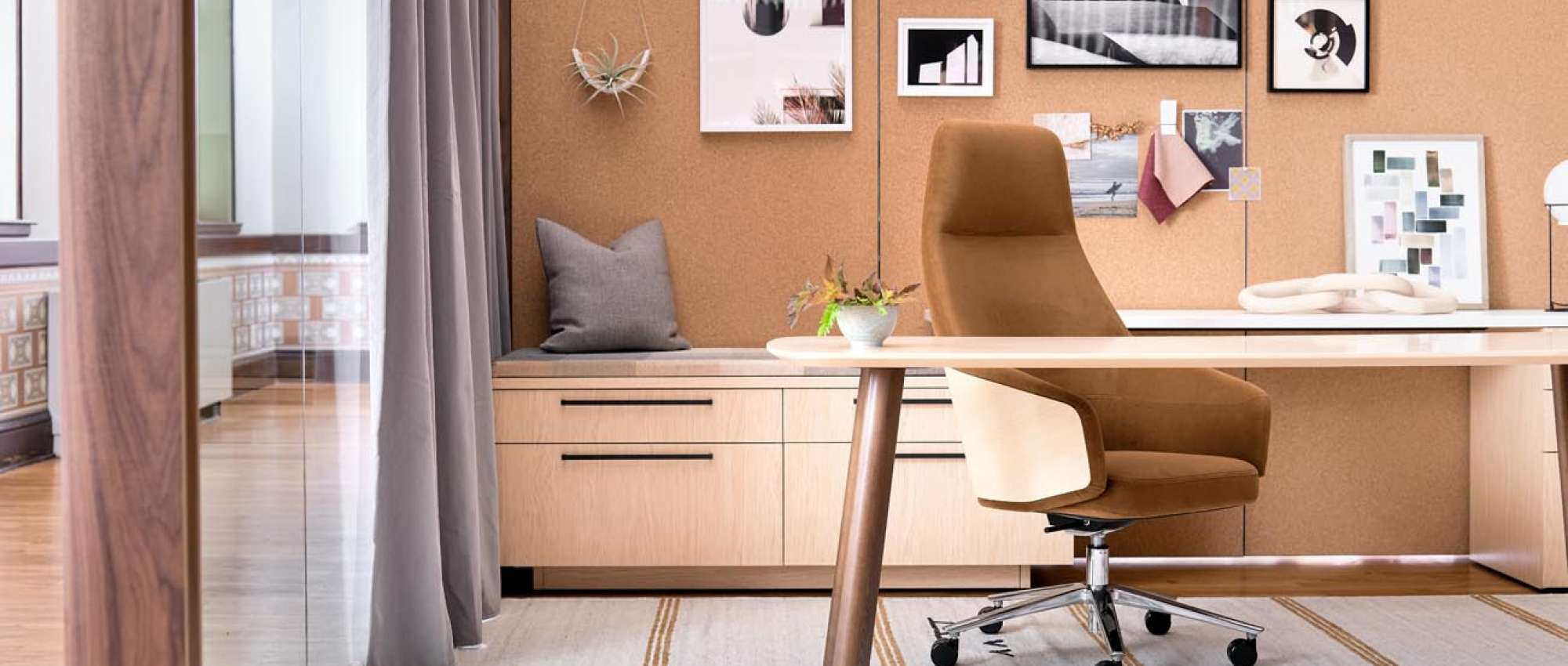A new meta-study analyzed all the research on sit-stand desks. They found that while standing desks probably won’t help you lose weight, there are other reasons to buy one.

If you’ve been following the trickle of research coming in on sitting vs. standing desks, you know conclusions are murky. Sitting will kill you! But standing will kill you, too! So what about those desks that let you sit or stand? Are they the answer to feeling better at work?
Yes, they are. Researchers recently analyzed 53 separate studies conducted on sit-stand desks and discovered that, while sit-stand desks certainly aren’t a panacea–and they probably won’t shed inches off your waistline–they can absolutely have a positive impact on your health and well-being.
The project was led by April Chambers, research assistant professor at the University of Pittsburgh’s Department of Bioengineering. She tells me that she began getting interested in sit-stand desks because much of her work was in occupational injury prevention for people who were on their feet all day, like nurses and retail workers. So she’d seen first-hand that these active jobs took a real toll on people’s bodies.“Sitting all day is bad for you–and standing all day is as well,” says Chambers, who explains that standing all day can create swelling in your feet, pain, and vascular issues.So Chambers and her collaborators rounded up all research on the happy medium between sitting and standing, sit-stand desks. And they analyzed the papers for their broad implications on behavior, physiological, work performance, psychological, discomfort, and posture.What did they find? First, the bad news. “When sit-stand desks first hit the market, a lot of people grabbed hold of them as a way to lose weight,” says Chambers.No doubt, this was driven by messaging that promoted them as “fit”and sometimes had infomercial-style claims of “transforming” your life. “The science is pretty clear,” says Chambers. “You may be able to use them as a weight management aid, but as far as a quick weight loss tool, you’re not going to see those instant results.”
However, just about every other finding in their meta-review on sit-stand desks was positive. These desks do change people’s behavior; just having one available does encourage people to stand more often. In other words, they work as intended. Examining the actual effects on someone’s body, some sit-stand desks users were found to have slightly lower blood pressure, and their heart rates was elevated between 7 and 13 beats per minute while standing, which is considered good for heart health.But the best news was regarding comfort in general. “The really neat fact for us was we saw bigger improvements across the literature in decreasing discomfort,” says Chambers. Most promising was a small group of niche studies that found people with lower back pain saw real improvements from using sit-stand desks.Since sit-stand desks were found to have no negative impacts on worker productivity, performance, or mood, Chambers thinks that sit-stand desks are a net positive for most people. “Even though the physiological things we found were mild changes, depending on who you apply those changes to, it may make a big difference in their health,” says Chambers. “I’m sure no one would complain in a minor improvement in their health.”Chambers believes the next step is deciphering how to optimize the day-to-day use of sit-stand desks, figuring out the best practices for how long people should switch positions to maximize the positive benefits. Right now, people self-regulate these behaviors, which may not be the best approach when it comes to comfort. At least one major furniture company is considering how to automate it.“The issue is, once you’re uncomfortable, it’s hard to get comfortable again,” says Chambers. “If we can use the desk as a way to delay that discomfort from coming on, that’s the real key to it.”
